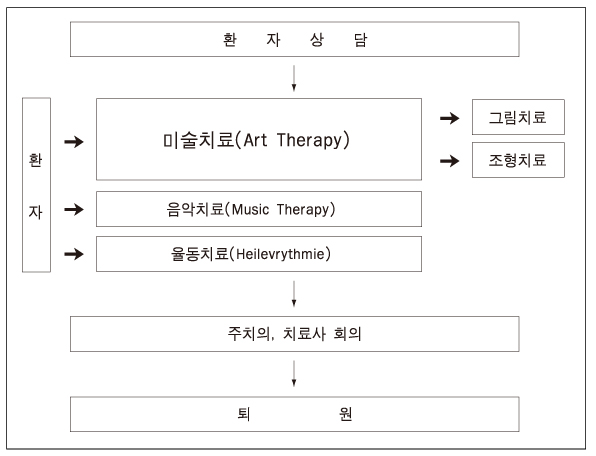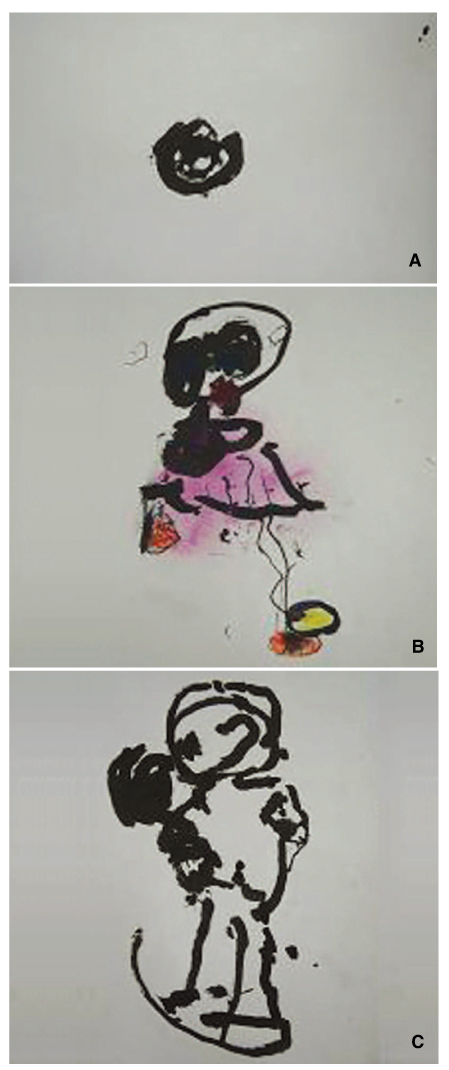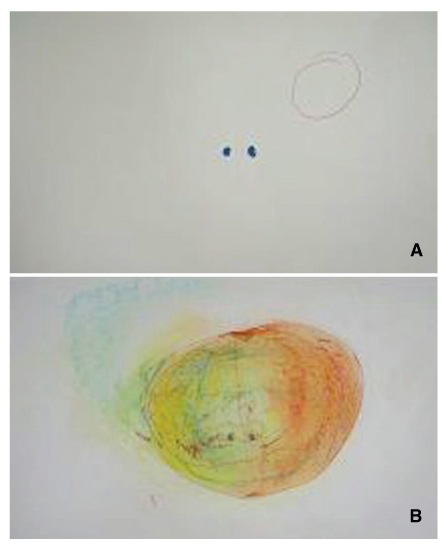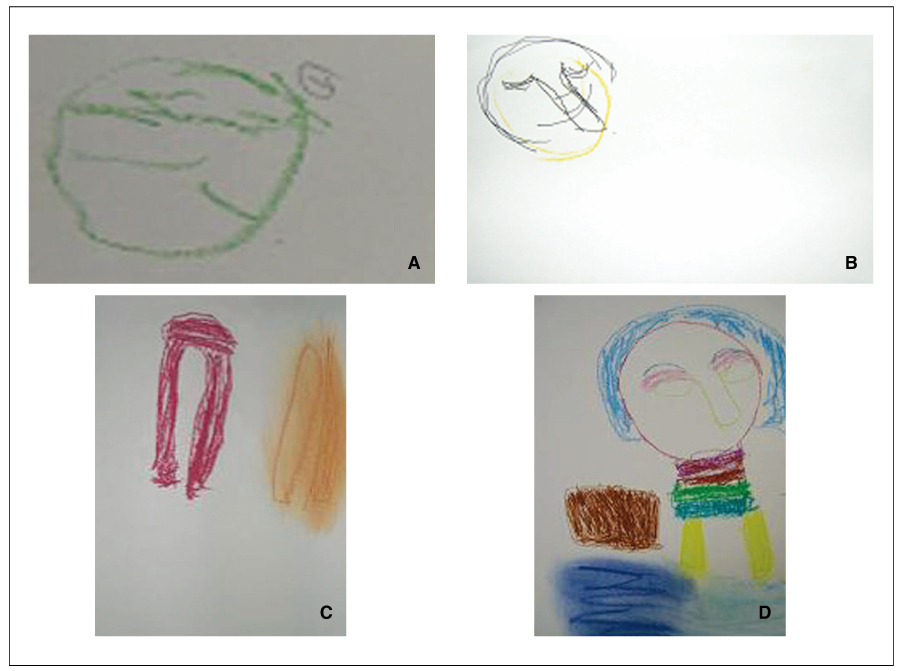J Korean Med Assoc.
2006 Jul;49(7):625-633. 10.5124/jkma.2006.49.7.625.
Current Status of Clinical Art Therapy
- Affiliations
-
- 1Pochon CHA Medical University, Korea. lydiaksh@dreamiz.com
- KMID: 1958261
- DOI: http://doi.org/10.5124/jkma.2006.49.7.625
Abstract
- Art therapy 1. is a health service profession based on knowledge of human development and psychological theories and research with integrative approach involving both sides of the brain, the mind, body and spirit, 2. utilizes art media (such as drawing, painting, clay), images, the creative process, and client response to create products that reflect the individual's personal development, abilities, personality, interest, concerns, and conflicts. and 3. has been implemented in assessment as well as treatment since 1961 when Ulman initiated a new terminology "Art Therapy" as described in the "Bulletin of Art Therapy". Art Therapy 1. endorses the idea that the process of making art is inherently therapeutic, 2. takes into consideration thoughts, feelings, behaviors and spirituality within the counselling process, 3. can be used to explore issues of relationships, family, loss, life transitions, abuse, and development, and 4. includes interventions to resolve emotional conflict, increase self-awareness and self-esteem, build social skills, change behaviour, increase coping skills, and to develop strategies for problem solving. For the past four decades in some developed countries like United States, France, Germany, and Japan, art therapy has been actively and positively applied in the fields of psychiatry, pediatrics, and rehabilitation medicine, and also in management of chronic pain and cancer patients as a complementary therapeutic modality and basic research tool as well. In approximately 2001 in Korea, educational program of art therapy on a post-graduate level at medical schools and art therapy clinics at university hospitals were begun. Ever since that time the clinical, academic, and research activities are noticeably growing in number and quality. It is anticipated that if the theories and skills of western medicine, oriental medicine and complementary alternative medicine are put together, the newly established integrative art therapy will make significant contribution toward overall improvement in future medicine.
MeSH Terms
-
Adaptation, Psychological
Art Therapy*
Brain
Chronic Pain
Complementary Therapies
Developed Countries
France
Germany
Health Services
Hospitals, University
Human Development
Humans
Integrative Medicine
Japan
Korea
Medicine, East Asian Traditional
Paint
Paintings
Pediatrics
Problem Solving
Psychological Theory
Rehabilitation
Schools, Medical
Spirituality
United States
Figure
Reference
-
8. Burton Goldberg Group. Future Medicine? Alternative Medicine, The Definitive Guide. 1993. CA: Tiburon.9. Peper erik, Holt Catherine, editors. New Creating Wholeness: A Self-Healing Workbook Using Dynamic Relaxation, Images and Thoughts. 1993. New York: Plenum.10. Kabat-Zinn Jon, editor. Full Catastrophe Living. 1990. New York: Dell Publishing.11. Goleman D, Gurin J, editors. Mind-Body Medicine: How to Use Your Mind for Better Health. 1993. New York: Consumer Reports Books.12. Borysenko joan, editor. Minding the Body/Mending the Mind. 1989. New York: Bantam Books.13. Benson Herbett, Klipper Mariam Z, editors. The Relaxation Response. 1976. New York: Avon.14. Gordon James S. Everett C, editor. Stress Management. 1990. New York: Chelsea House publishers.15. Selye Hans, editor. Stress Without Distress. 1975. New York: Signet.16. Bruce DF, McIlwain HH, editors. Unofficial Guide to Alternative Medicine. 1998. Simon & Schuster Macmillan Company.
- Full Text Links
- Actions
-
Cited
- CITED
-
- Close
- Share
- Similar articles
-
- Effects of Group Art Therapy Program on Self-Esteem and Mental Health Status in Chronic Schizophrenic Inpatients
- Current status of proton therapy techniques for lung cancer
- Effect of Clinical Art Therapy on Self-Esteem, Anxiety, and Pain of Pediatric Burn Patients
- The Effects of Integrative Art Therapy on Social Competence and Hand Function of Children with Cerebral Palsy
- Effects of Group Art Therapy Program on Body Image and Self-esteem in College Women






